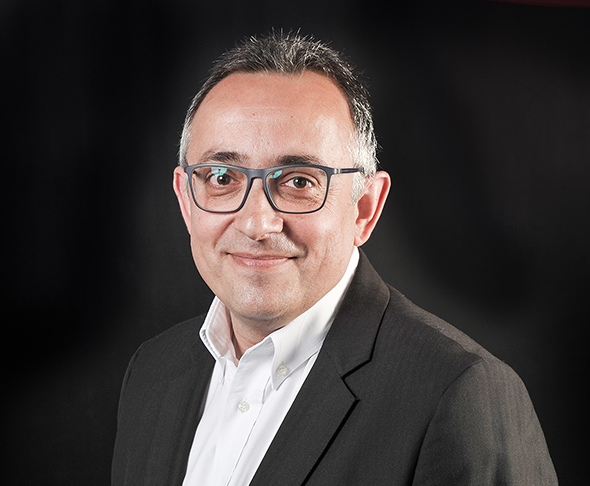10th May 2018
R&D has always been a core element at EXTENDE. It is in this frame that we had the honor to meet with Philippe Da Silva from the Region New-Aquitaine, whose interview you can read today.

Assistant Director of Competitiveness within the Industrial Performance Department of the Region of New-Aquitaine, could you briefly present the Region and its challenges?
The elected representatives of the Regional Council of New-Aquitaine have adopted the Regional Plan of Economic Development of Innovation and Internationalization of Companies (SRDEII). It is a founding document as it lays out the foundations of the regional strategy for economic development, developed after extensive consultation with the territories and their main actors. Public meetings favored the exchanges and contributions were collected, analyzed and repeated for many of them.
The objective of the Region is to be able to rely on its sectors of excellence, its know-how, while strengthening its attractiveness.
The development, strong competence of the Region, is a priority to allow the neo-Aquitaine ones to bloom fully on the territory.
The SRDEII sets 9 strategic orientations:
- 1. Anticipate and support regional transitions, support digital transformation, encourage ecological and energy transition, promote mobility and intelligent transportation;
- 2. Pursue and reinforce the sectoral policy;
- 3. Improve the industrial performance of regional companies, deploy the Factory of the Future;
- 4. Accelerate the development of the territories through innovation;
- 5. Strengthen the territorial economy, entrepreneurship and the networking of the territory;
- 6. Permanently anchor the various forms of Social and Solidarity Economy on the regional territory;
- 7. Accompany the reversal and the revival of territories and companies;
- 8. Strengthen the internationalization of businesses, of ecosystems, and the attractiveness of territories;
- 9. Develop the business financing ecosystem.
These guidelines served as a basis for the development of the new intervention by-law adopted by elected officials in February 2017.
EXTENDE reached out for you as part of its NDT R&D development project, for which the New-Aquitaine Region has given its support. Could you tell us more about the NDT activity in the Region and your intent to develop it?
EXTENDE employees have indeed met the services of the Region (Industrial Performance and Research) to examine the conditions for a support service.
It is important for the Region that its companies have all the skills or necessary offers to meet the expectations of their customers. NDT guarantees the quality of the parts sold and is part of the quality processes of the companies.
In this respect, some companies have the necessary means of control or outsource the service. As far as EXTENDE Company is concerned, it is important for the Region to be able to reinforce the offer of expertise on its territory.
The competitiveness of companies cannot be conceived without having all the links constituting a value chain.
New-Aquitaine has a particularly dynamic industry. Which sectors are the most represented?
The territory has many sectors of excellence: Food and agricultural industries ? Wood and paper industries ? Aeronautics, space, defense and mechanical subcontracting ? Advanced materials ? Green chemistry and Eco-processes ?Green sectors and ecotechnologies ? Photonics ? Digital ? Health and well-being ?Leather, Luxury, Textile and Works of Art ? Tourism ?Silver Economy.
Industrials are stakeholders in competitiveness clusters and others...
5th French region for the creation of companies, and 1st in Research and Development, according to you, what are the reasons for the economic attractiveness of New Aquitaine for the industrials?
Of course, I could mention the quality of life on the whole territory... The charm of the South-West (its Atlantic facade of 700 km, the interest of its territories, its architectural or gastronomic heritage...).
Its men and women, its skills (training and research structures, its companies).
Its infrastructure, with Bordeaux 2h04 away from Paris.
The real voluntarism of the Region in terms of support for companies.
Two examples in this area:
- The regional program “Usine du Futur” (Factory of the Future) with 450 companies supported in the path of operational excellence (target of 600).
- The decision of implantation (March 2018) at Chasseneuil du Poitou (department 86, near the Futuroscope) of the company Forsee Power. This site will allow this French expert in smart battery systems for urban mobility to increase its production capacity by the end of 2018. More than 100 jobs are planned this year and nearly 300 by 2021, before any additional extension.
With a GDP of 158 billion euros, what are the big projects to come?
Let's mention some major projects:
Neurosciences: Broca New-Aquitaine Center
The investment of the Region, project manager for the Broca New-Aquitaine Center project, inaugurated in September 2017, equals the ambitions of this 15,000 m² center of excellence: 67 million euros, including 20 million euros to support researchers' projects and attract new talents, and to boost regional leadership in brain sciences in New-Aquitaine.
Very high speed: New-Aquitaine accelerates!
While the government is calling for an acceleration of the implementation of broadband and ultra-fast broadband, particularly with the help of technologies such as 4G, the Region and its local public partners – with Departments at the forefront - are strengthening their ambitions and intend to connect to optical fiber nearly a million additional homes by 2021.
MECA, the House of Creative Economy and Culture
The Meca will host at the end of January 2019 the FRAC Aquitaine (Regional Contemporary Art Fund) and the two regional cultural agencies: ALCA (Book, Movie and Audiovisual Agency) and OARA (Artistic office of the Region), quai de Paludate in Bordeaux, near the Saint-Jean train station.
The goal of this joint house is to generate a creative hybridization and to become a tool for supporting new cultural economies, a hub of regional artistic creation.
